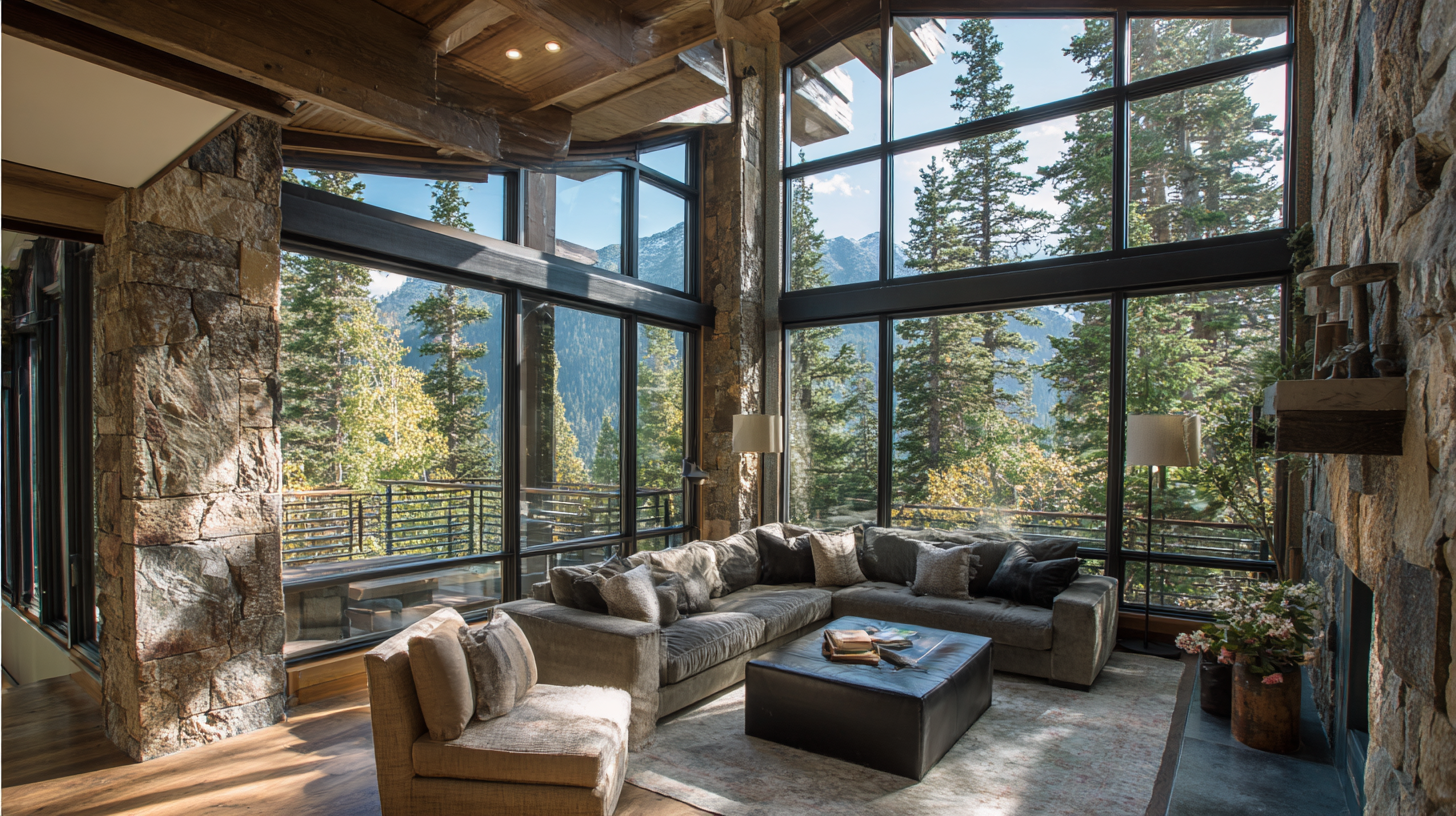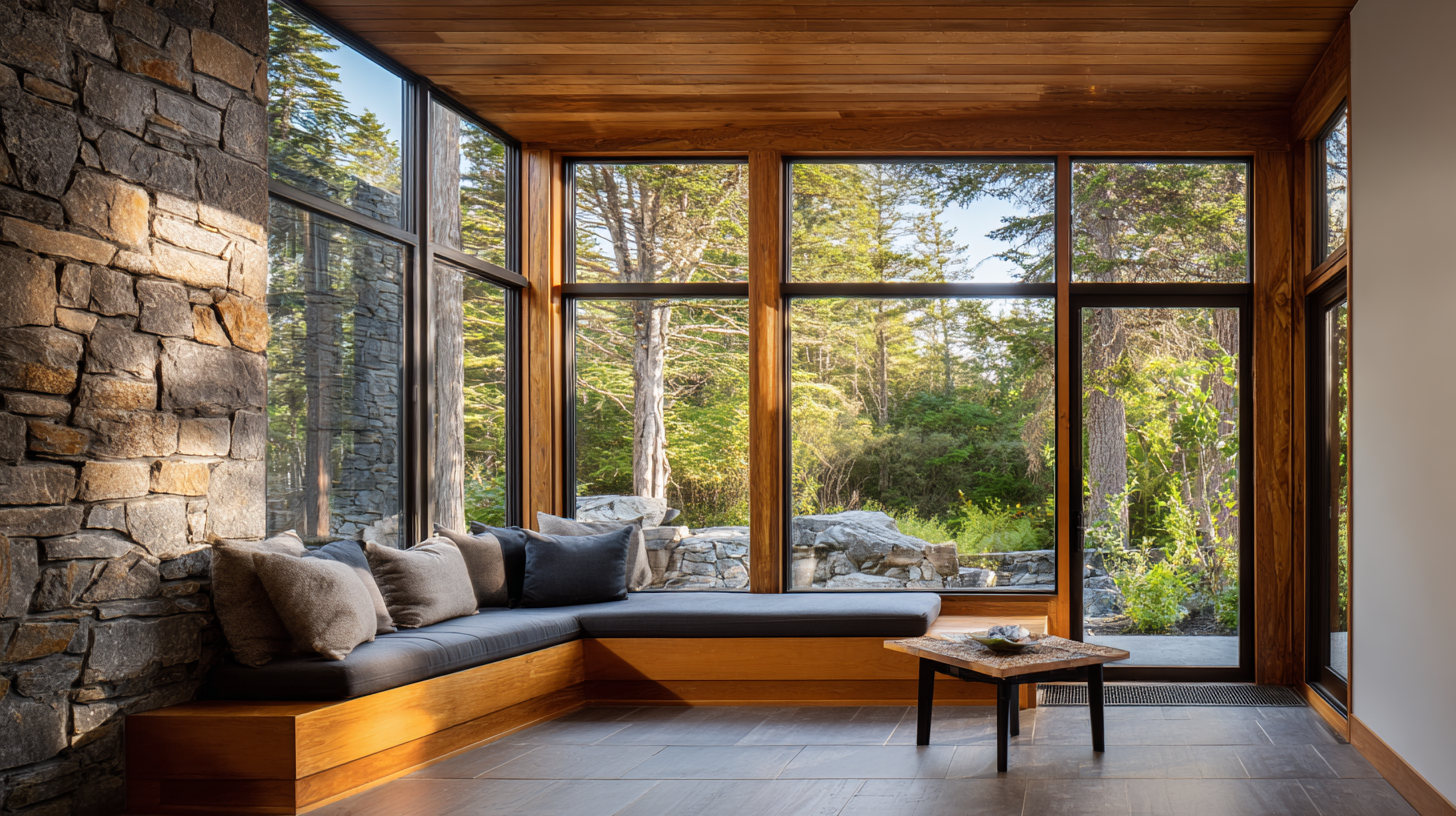Blog
Innovative Uses of Best Home Windows in Sustainable Architecture What are the Benefits
The architectural landscape is rapidly evolving towards sustainability, with innovative uses of home windows playing a pivotal role in this transformation. According to the U.S. Department of Energy, energy-efficient windows can reduce heating and cooling bills by up to 15%, highlighting their significant impact on residential energy consumption. As we shift towards greener building practices, the emphasis on using high-quality home windows manufactured in regions like China is paramount, ensuring durability and performance. A report from the World Green Building Council reveals that buildings are responsible for over 39% of global carbon emissions, which underscores the need for architects and builders to prioritize environmentally friendly materials. Implementing state-of-the-art window technologies not only enhances the aesthetic appeal but also advances energy efficiency, thereby contributing to a sustainable future.

Benefits of Energy Efficiency in Sustainable Home Windows Design
In recent years, energy efficiency has become a cornerstone of sustainable home window design, significantly influencing both environmental outcomes and homeowner satisfaction. According to the U.S. Department of Energy, residential windows can account for up to 25% of a home’s energy use, making the selection of energy-efficient windows critical for reducing energy consumption. High-performance windows, such as those featuring low-E coatings and argon gas fills, can reduce heat loss in the winter and minimize solar heat gain in the summer, resulting in a more stable indoor temperature. This leads not only to lower energy bills but also contributes to a reduced carbon footprint over time.
Moreover, the impact of energy-efficient windows extends beyond mere cost savings. A report by Lawrence Berkeley National Laboratory indicates that replacing single-pane windows with energy-efficient alternatives can save homeowners between $126 to $465 annually, depending on the climate. These windows foster an environment that enhances livability through improved natural lighting and reduced noise pollution, providing additional well-being benefits. As the trend towards sustainable architecture grows, the integration of energy-efficient window designs is proving to be a strategic investment for both individual homeowners and the broader mission of environmental stewardship.
Maximizing Natural Light Through Strategic Window Placement
Maximizing natural light through strategic window placement is a crucial consideration in sustainable architecture. By carefully designing window locations and sizes, architects can harness sunlight effectively, reducing reliance on artificial lighting and enhancing energy efficiency. South-facing windows, for example, capture abundant sunlight throughout the day, warming spaces naturally and contributing to passive solar heating, which not only improves comfort but also diminishes energy consumption.
Furthermore, integrating windows into the architecture can improve residents’ well-being by connecting indoor spaces with the natural environment. Larger windows or glass walls can create a seamless transition between indoors and outdoors, allowing occupants to enjoy scenic views while promoting a sense of tranquility. Strategic placement can also ensure that light reaches deep into the building, illuminating interior spaces without the need for excessive lighting solutions. This approach not only fosters a healthier living environment but also supports the overall sustainability goals by minimizing energy use and enhancing the aesthetics of residential buildings.
Choosing Sustainable Materials for Long-Lasting Window Installations
Choosing sustainable materials for long-lasting window installations is increasingly recognized as a crucial step towards eco-friendly architecture. The glass and glazing industry has made significant strides in improving efficiency and reducing emissions, a movement that aligns with the growing emphasis on sustainability in construction. By selecting advanced glazing options, installations can now attain remarkable energy performance, which not only decreases a building's carbon footprint but also provides homeowners with substantial cost savings over time.
Moreover, PVC window frames have emerged as a popular choice due to their durability and low maintenance needs. Research indicates that buildings using these frames can achieve better thermal insulation, which is crucial for energy efficiency. As the market for sustainable materials expands, it's clear that the integrated use of responsibly sourced components will define the future of architecture, ultimately leading to better-performing homes that contribute positively to their environments. As we navigate this transition, the collaboration between material suppliers and builders becomes essential, reinforcing the commitment to only partner with those who uphold high social and environmental standards.
Innovative Technologies in Window Design for Enhanced Insulation
 Innovative window design plays a vital role in enhancing insulation, contributing significantly to sustainable architecture. Modern technologies, such as double or triple glazing, have revolutionized window performance by providing superior thermal insulation. These windows trap air or gas between layers of glass, which minimizes heat transfer and helps maintain consistent indoor temperatures. Using low-emissivity (Low-E) coatings on window panes also reduces heat loss while allowing natural light to enter, thereby boosting energy efficiency in homes.
Innovative window design plays a vital role in enhancing insulation, contributing significantly to sustainable architecture. Modern technologies, such as double or triple glazing, have revolutionized window performance by providing superior thermal insulation. These windows trap air or gas between layers of glass, which minimizes heat transfer and helps maintain consistent indoor temperatures. Using low-emissivity (Low-E) coatings on window panes also reduces heat loss while allowing natural light to enter, thereby boosting energy efficiency in homes.
When considering window options, homeowners should look for Energy Star-rated products that signify improved energy performance. Additionally, incorporating smart window technologies, like electrochromic windows that can change tint based on sunlight exposure, can further enhance insulation and reduce cooling costs during hot months.
Lastly, leveraging other materials in window frames, such as fiberglass or recycled aluminum, not only adds to durability but also aligns with eco-friendly building practices. As sustainable architecture continues to evolve, innovative window solutions will remain essential in promoting energy efficiency, reducing environmental impact, and providing comfort in living spaces.
The Role of Smart Glass in Modern Sustainable Architecture Solutions
In modern sustainable architecture, the incorporation of smart glass has emerged as a transformative solution, enhancing energy efficiency while providing aesthetic appeal. Smart glass, or switchable glass, has the unique ability to alter its properties in response to external conditions, such as sunlight. This technology allows for dynamic control over heat and light entering a building, reducing reliance on artificial lighting and climate control systems. By minimizing energy consumption, smart glass not only contributes to lower utility bills but also supports eco-friendly building practices.

Moreover, smart glass plays a pivotal role in creating healthier living environments. By filtering UV rays and reducing glare, it enhances indoor comfort without compromising natural lighting. This feature aligns with the principles of sustainable architecture, promoting wellness and productivity among occupants. As architects and builders increasingly adopt innovative materials like smart glass, they pave the way for resilient structures that meet both environmental challenges and the demands of modern lifestyles, proving that sustainability can be seamlessly integrated with cutting-edge design.
About Us
We serve the Greater Milwaukee area: Waukesha, Milwaukee, Washington, Ozaukee Counties and nearby areas, including Germantown, Menomonee Falls, Mequon, Cedarburg, Thiensville, Grafton, Jackson, West Bend, Hartland, Waukesha, Brookfield, West Allis, Franklin, Greenfield and more. We are Wisconsin’s Best Contractor for Replacement Windows, Doors, Siding & Roofing!
Contact Details
Address:
N112 W14880 Mequon Road
Germantown, Wisconsin 53022
Phone:
Email:
Showroom Hours
Monday: 9am – 5pm
Tuesday: 9am – 5pm
Wednesday: 9am – 5pm
Thursday: 9am – 5pm
Friday: 9am – 4:30 pm
Saturday by Appointment
Evenings by Appointment



